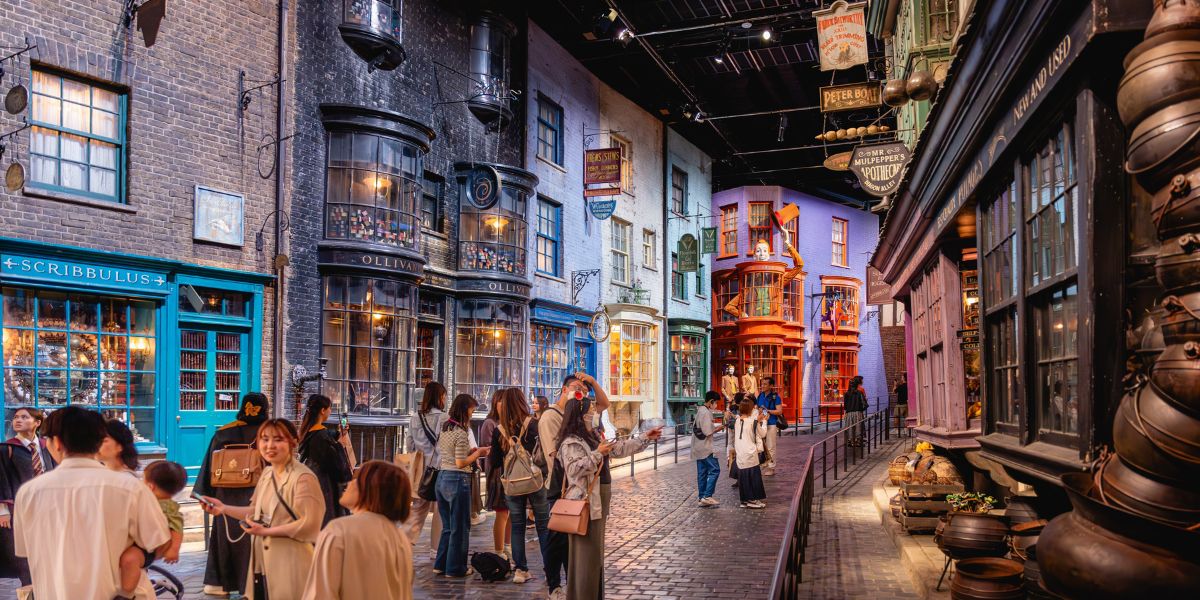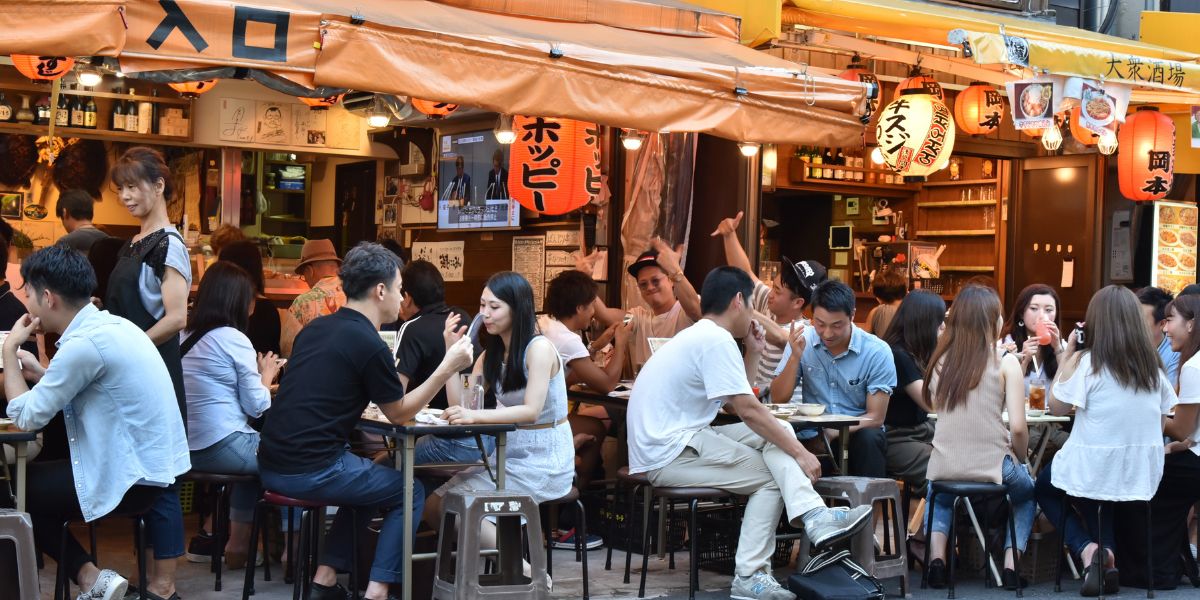Imagine looking out of the window during your Shabbat dinner and seeing the iconic Tokyo Tower, the bustling yet orderly crowds, and the neon signs that light up Tokyo. This could be you if you choose to embark on the trip of a lifetime with Gil Travel Jewish Tours and celebrate the upcoming holidays with an unforgettable Seder in Tokyo!
Read this guide to celebrating major Jewish holidays and keeping Jewish traditions in Japan, including Shabbat observance, keeping kosher while touring Tokyo, and how to adapt Jewish customs and traditions.

Traditional Tokyo Experiences with a Jewish Twist
Visiting Shinto shrines and understanding their parallels with Jewish practices
Despite the apparent differences between Judaism, with its emphasis on morality and monotheism, and Shintoism, which promotes the worship of multiple gods and little focus on moral codes, both religions have several unexpected things in common!
Shinto shares a crucial characteristic with Judaism in that they are ‘chosen people’ for whom their land was specially intended. This view has led both Jews and Japanese to have very insular societies and a tendency to see the world in terms of us and them. Japan managed to isolate itself from the outside world for centuries, maintaining a largely homogeneous society even today. In contrast, the Jewish people were compelled to flee their homeland and adapt to various foreign cultures. Despite this, Jews in the diaspora often faced segregation from their neighbors, both by choice and by force.
Another characteristic these seemingly very different religions have in common is the importance placed on purity and cleanliness in the form of ritual washing and bathing, as well as preserving the purity of sacred spaces. Lastly, Shinto shrines also have alters and are devoid of imagery representing deities.
Exploring Tokyo’s historic neighborhoods and their connections to Jewish history
Scattered throughout the city are historical districts that offer a rich tapestry of old and post-war Tokyo, from serene temple grounds to bustling shopping streets, allowing you to step back in time and get glimpses of ancient Japanese traditions and architecture while enjoying all of the city’s ultramodern amenities!
Literally translated to “lower city,” shitamachi districts were home to Japan’s middle and lower-class neighborhoods that managed to escape Japan’s post-war reconstruction and modernization. Left behind are historical buildings, traditional architecture, and family-run traditional shops that are fast disappearing from Tokyo’s futuristic metropolis. Locals and tourists alike appreciate the nostalgic “Old Town” vibes that serve as a brief escape from the Tokyo rush.
Check out a few of the city’s most iconic shitamachi neighborhoods:
Yanaka
This area is one of the oldest parts of Tokyo, and it was miraculously spared from bombing in World War II, an earthquake, and fire. Yanaka is the most traditional district, home to artisans, multiple temples, a beautiful cemetery, and a large number of much-adored stray cats and cat statues that dot the neighborhood.
Shibamata
The streets of Shibamata are characterized by old cobblestone streets, wooden accents, and old architecture, giving it a quaint and cozy atmosphere that is perfect for a relaxing day of wandering. If you’re in the area, be sure to visit the Shibamata Taishakuten Temple, which is famous for the intricate wooden carvings that cover the temple walls, depicting local folklore and a scene from Buddhist scripture.
Asakusa
Located in Tokyo’s Taito ward, Asakusa is a historical district known for being home to Senso-ji, Tokyo’s oldest temple, founded in 628 AD. During the Edo period, Asakusa was known as Tokyo’s entertainment district, which was filled with traditional theaters and a red-light district. While the district was widely destroyed during World War II, visitors can experience Japanese theater in the Asakusa Engei Hall – a performance hall for traditional Japanese comedic storytelling and other traditional performative arts. After this, head over to Nakamise Shopping Street for some old-school Japanese sweets that you can eat in the nearby Sumida Park for a riverside picnic.
Shimokitazawa
Shimokitazawa, often called “Shimokita,” is located in Tokyo’s Setagaya ward, offering visitors a laid-back bohemian experience. Initially an agricultural district, it became a hub for artists, musicians, and young people in the late 20th century. The area is famous for its vast array of vintage clothing shops, niche bookshops, music shops, cozy cafes, theatres, and live music venues.
Kagurazaka
Right outside of the former outer moat of Edo Castle in Shinjuku ward is the historic Kagurazaka district, once home to samurais and traditional geisha houses that can still be seen today!
Participating in traditional Japanese Tea Ceremonies and their potential alignment with kosher dietary laws
Who doesn’t love a cup of tea? In Japan, drinking tea is much more than taking a break —it’s a serious art form perfected over hundreds of years! Sado, literally translated into “the way of tea,” is the formal way of preparing and drinking green tea, typically in a traditional tearoom. The purpose of a tea ceremony goes beyond being served tea – it’s a way for people to show their hospitality and for guests to escape the hustle and bustle of everyday life.
Introduced by China in the 8th century, tea was originally drunk by monks and the upper crust for medicinal purposes. It wasn’t until the 12th century that tea became accessible across all social classes, making tea parties a popular pastime to show off one’s tea bowls and knowledge of tea.
A more formal tea party was also gaining popularity, with an emphasis placed on simplicity and spirituality. This eventually transformed into the traditional tea ceremony we know and love today!
A full tea ceremony is a multi-hour event that starts with a multi-course sweet and savory kaiseki meal, with both thick and thin tea. However, most tea ceremonies have been dramatically shortened, consisting of a bowl of thin tea and complimentary traditional treats. These sweet morsels are meant to balance the bitterness of the green tea. An example of a popular tea-time accompaniment is wagashi – a traditional sweet made from rice flour and sweet bean paste often decorated to reflect the season or occasion.
If you are a kosher observant tourist, this can be a great option if you’re willing to eat vegan, non-kosher food. You can also bring these treats back home by preparing them in your own kitchen with simple ingredients to recreate a traditional tea ceremony for you and your friends or family!
Finding a Jewish Community in Tokyo
Compared to port cities like Yokohama and Nagasaki, or Kobe, which have had a Jewish presence since the late 19th century, Tokyo’s Jewish community only started growing after World War II. Today, it’s home to the most significant Jewish population in Japan, consisting of around 500 individuals. Most individuals come to Tokyo for various reasons, such as work opportunities, an interest in Japanese culture, a desire to learn the language, or simply to explore Japan more deeply.
Today, Jews in Tokyo have access to many amenities, such as Kosher food, religious services, and even children’s education through the city’s two Chabad Houses – Chabad Lubavitch of Japan and Chabad House of Japan, and the Jewish Community Center (JCC). These organizations offer a sense of familiarity and community to Jewish tourists and local Jews alike.

Jewish guided tours of Tokyo highlighting areas of interest
Japanese culture and history have fascinated millions across the globe, bringing many of them to visit Japan, and Tokyo in particular, every year. Being an isolated nation until just a few hundred years ago, ancient Japanese customs, architecture, and religious influence are still firmly ingrained in society.
In Tokyo, the contrast between the shiny skyscrapers, futuristic technology, and luxury global brands starkly contrasts with the pockets of ancient and pre-war Japan in the form of temples, shrines, cobbled streets, traditional architecture, and artisan shops that are dotted across the city. But that’s exactly what makes Japan such a one-of-a-kind destination to visit!
If you are looking to tour Tokyo with an emphasis on the country’s Jewish history, Gil Travel offers guided tours that will navigate you through the busy Tokyo streets and top sites while giving you deep insight into the little-known history of Jewish presence in Japan.
During a tour of Tokyo, you will stop at some of Tokyo’s most iconic landmarks:
Meiji Shrine – Dedicated to the first emperor of modern Japan, this stunning shrine is located in a tranquil forest made up of 100,000 trees that gives visitors a much-needed break from Tokyo’s busy urban streets.
Shibuya district: A vibrant shopping and entertainment area that boasts one of Tokyo’s most iconic landmarks – the busy intersection!
National Art Center Tokyo – Marvel at masterpieces by Japan’s top contemporary and traditional artists, which include ancient calligraphy, woodblock prints, and modern art installations.

Kosher restaurants and markets in the city
As you might have expected, keeping kosher in a largely homogenous society without a significant Jewish population can be quite a challenge. Most traditional Japanese dishes incorporate pork or fish, and vegan and vegetarian options are limited and not always as kosher as they claim.
Currently, Tokyo has two kosher-certified restaurants:
Chana’s Place – 1 Chome-5-23 Takanawa, Minato City, Tokyo 108-0074
Chana’s Place is a glatt kosher meat restaurant offering Jewish and Israeli-style dishes. You can also buy challot and Shabbat meals that can be delivered directly to your hotel!
Kosher Delica – 1 Chome-25-18-1F Sanno, Ota City, Tokyo 143-0023
A kosher delivery and catering service established by the local Chabad that will deliver to any location in Japan.
You might also come across several Israeli dining establishments across Tokyo, though they are not kosher.
If your accommodation has a kitchen or kitchenette, you have a few options for kosher groceries, including Chabad, which sells a selection of kosher products, and supermarkets that offer imported products. Two such supermarkets are National Azabu Supermarket and Nissin World Delicatessen.
Celebrating Shabbat in the Heart of Tokyo
A unique timing challenges due to Tokyo’s early sunsets
Shabbat services and community dinners
Whether you’re an observant Jew or not, you will be welcomed with open arms every week for Shabbat services and meals at Tokyo’s Chabad houses and the local Jewish Community Center of Tokyo! If you wish to have Shabbat meals, all three locations require you to fill out a reservation form on their website.
A great way to incorporate Japanese culture into your Shabbat table is by adding a splash of sake – a traditional fermented alcohol. Recently, the Funasaka Sake Brewery in Gifu became certified kosher, offering observant Jews a great way to add a piece of the local culture to their tables. With a lack of diverse kosher food options in Japan, many in the Jewish community are toasting to this!
Japanese-inspired Shabbat customs adopted by local communities

Pesach in Japan: A Unique Cultural Experience
Where to find Pesach seders in Tokyo
Like Shabbat, the local Chabad houses and the Jewish Community Center are your go-to places for celebrating Jewish festivities, including Pesach in Japan. During the holiday, these Jewish community centers are filled with Jews from Tokyo and beyond who want a taste of the Jewish community and traditional holiday fare. It’s a great way to meet and befriend fellow tourists and local Jewish Tokyo dwellers!
Sourcing kosher for Passover ingredients in Japan
While not easy, it can definitely be done! If you know that you will be celebrating Pesach in Tokyo, you can pack a few kosher-for-passover essentials, such as Matzah and non-perishables you know you’ll want to eat. In the case of meat, poultry, dairy, and other products, Chabad and the JCC import a selection of products from the States, Canada, and Israel every year to meet the local community’s needs.
How local Jews adapt traditional Pesach customs to life in Japan
Pesach is one of the most widely observed holidays in Jewish culture, with every family having their own unique traditions that have been passed down from generation to generation. While most of the seder customs, such as the recital of the Hagaddah and the hiding of the afikoman, can be done anywhere, finding the items for the seder plate and kosher-for-Pesach products may need a little creativity! For example, some will replace flat-leaf parsley with mitsuba (Japanese parsley) or onion, while horseradish root can be replaced with wasabi root. A shank bone can also be challenging to acquire, so a chicken leg bone may be used instead.
Thankfully, local Chabad Houses across Japan are able to provide most of these seder plate essentials to the entire Jewish community, including matzah!
If you’re taking part in a tour of Tokyo with a Jewish travel agency, food is one thing you won’t have to worry about. Gil Travel offers a festive Pesach in Japan experience at the luxurious Hilton Tokyo in Shinjuku, where you and your family will join our lavish Seders with kosher Japanese cuisine, inspiring Tefillot and Shiurim, and unforgettable cultural experiences, such as a Samurai performance, traditional tea ceremony, kimono dressing, and more!
During Chol Hamoed, you can explore Japan on your own and sign up for our exclusive group tours, led by professional and knowledgeable local Japanese guides, to discover the rich culture and history of Japan, as well as Japan’s Jewish history and modern Jewish life in Tokyo.
Celebrating Jewish Holidays with Japanese Flair
Sukkot Celebrations in Urban Tokyo Settings
This 7-day holiday celebrating the time when God provided for the Jews when they left Egypt is a family favorite! Eating meals in a Sukkah under the open sky and reciting blessings over the Four Species make it a fun and meaningful holiday that everyone can enjoy.
If you’re visiting Tokyo, both Chabad Houses and the JCC have sukkahs with open doors for anyone who wants to take part in the festivities, which include meals and fun activities for the kids! Chabad also enables Jewish tourists outside of Tokyo to celebrate by deploying mobile sukkot that are sent to 8 popular tourist locations across Japan.
If you’re not able to reach either of these options, it’s permissible to eat under a pergola or gazebo with at least three walls and a roof that allows you to see the sky. You will most likely find these in some of Japan’s numerous parks. It is also permitted to eat outside of a sukkah if you’re only eating fruits and vegetables or if your meal consists of less than a kezayit (the volume of an egg) of mezonos.
Hanukah events and menorah lightings in public spaces
There’s nothing quite as festive as Hanukkah – the Jewish festival of lights! While in Tokyo, you can celebrate with Chabad, which holds an annual Menorah lighting ceremony with breathtaking views of the city at the top of Tokyo Tower.
Late December is a great time to be in Tokyo, as the city is filled with festive light and fireworks displays – perfect timing for the Festival of Lights! Take a stroll after lighting the menora and enjoy the illuminated city scenes, parks, and rivers that are lit up across Tokyo:
Odaiba Rainbow Fireworks Display – Every Saturday night in December
Toranomon Light Art – November to January
Meguro River Illuminations – November to January
Shinjuku Twinkle Park – Late November to Mid January
Purim parties incorporating elements of Japanese pop culture
There’s no better time to unleash your creativity and have fun than on Purim. Take some inspiration from Japanese pop culture for a Purim party like no other! Here are a couple of ideas that will take you and your guests on a trip to Japan:
- Japanese-themed Mishloach Manot in a bento box.
- Feature Japanese cuisine in your seuda.
- Japanese-inspired decor, such as lanterns, kabuki masks, and fans.
- Hold a Japanese costume contest for the kids (and adults!). Costumes can include ninjas, geisha, sushi, sushi chef, famous anime characters, and samurai.
- Eat Japanese-style on a picnic blanket or low coffee table.
- Decorate fans or lanterns
- Do karaoke with traditional Purim songs
Balancing Jewish Observance with Japanese Tourism

Tips for keeping kosher while exploring Tokyo’s culinary scene
Being a kosher traveler means you often have to think about where you’re going to get your next meal, which nobody wants to do on a vacation when you’re supposed to be relaxing and enjoying yourself.
Tokyo is a notoriously difficult city to obtain kosher food, so we’ve collected some of our best tips for keeping kosher while ensuring a smooth, stress-free experience!
- Pack non-perishables such as cereals, pasta, rice, instant meals, crackers, canned beans, and tuna.
- If it can fit in your luggage, bring a small pot and pan for cooking
- Bring a set of reusable cutlery, a bowl, and/or a plate.
- Take advantage of Japan’s high-quality fruits and vegetables
- Check out the list of kosher fish on the Chabad website and get it fresh while you explore the historic Tsujiki fish market
- Look up local supermarkets with international food sections.
- Book a hotel or apartment with a kitchen so you can cook your own food
- Make sure that you’re within walking distance of a Chabad or the JCC for Shabbat services and meals
- If you’re lenient, list vegan restaurants near your accommodations and the areas you will be touring with a reputable website like happycow.net.
- Buy ready-made meals and kosher ingredients from Chabad, Chana’s Place, or Kosher Delica.
Scheduling sightseeing around Shabbat and holiday observances
There’s nothing worse than losing precious sightseeing time, especially when you’re staying in a city like Tokyo, where there are almost too many fascinating sites to see. This is why we believe it’s essential to be strategic about your Shabbat and holiday stays by booking accommodation within walking distance of Shabbat-safe tourist sites, like parks and outdoor exhibitions. Tokyo’s Chabad Houses and the JCC are in pretty central areas of Tokyo, so you should have no problem finding something to see near your accommodation.
Jewish-Friendly Ryokan Experiences
Thought to be the oldest form of the hotel in the world, ryokan, or traditional Japanese inn, offers an experience you won’t be able to find anywhere else in the world! Ryokan strive to create a tranquil ambiance by incorporating natural elements and minimalist decor for the ultimate relaxing vacation.
When you book a night at a ryokan, you can expect to stay in a traditional style Japanese accommodation with tatami flooring, futon bedding, private baths (sometimes outdoor), yukata robes, sumptuous in-house multi-course dinners, and a traditional Japanese breakfast.
Guests are expected to follow certain Japanese customs and etiquette, such as taking off their shoes before entering a room, bathing in an onsen, and wearing traditional yukata robes while they’re in the ryokan. While this may seem intimidating, staff are trained to explain these rules before you start your stay.
Worried about keeping kosher? Many ryokan have kitchenettes in their rooms, making it easier for Jewish guests to keep kosher. Those willing to eat vegan may have luck in modern ryokan, which are more likely to offer vegetarian and vegan meal options.
Bringing Japan Home: Incorporating Japanese Elements into Jewish Traditions
Japanese design and decor are rooted in simplicity and connection to nature, utilizing clean lines, natural textures, and neutral colors. These principles strive to bring harmony and balance to the space, and using them in your home can make for a relaxing and aesthetically pleasing holiday.
Using Japanese ceramics for Shabbat and holiday meals
The craft of pottery and porcelain has flourished in Japan from the Neolithic period to the present day, making it one of the oldest ceramic traditions in the world. Change up your holiday table with a muted palette featuring Japanese ceramics (authentic or inspired) with natural motifs, traditional patterns, or a glazed earthenware texture. This will lend a note of sophistication to your next Shabbat meal!
Integrating Ikebana into Holiday Decorations
Bring a sense of tranquility to the often chaotic holidays by utilizing Ikebana – traditional Japanese flower arranging. Unlike conventional floral arrangements, which may overwhelm with their color and size, Ikebana offers a mindful approach to its arrangements, focusing on space, line, and form. Incorporating these principles into flower arrangements and other spaces in the home promotes well-being and relaxation, which in turn helps to combat the chaos of a busy modern lifestyle and the high holiday stress!
Adopting Japanese Minimalism in Jewish Home Decor
With so many holidays and celebrations, we’re bound to wake up one day and realize we have way more stuff than we actually need, whether it be multiple candleholders, benchers, kiddush cups, or menorahs that have been collected over the years.
Here are a few ways you can incorporate Japanese minimalism and bring tranquility and balance into your home:
- Declutter and organize by keeping items with purpose or hold strong sentimental value.
- Play with natural materials to incorporate elements from the outdoors inside your home.
- Instead of overdecorating, choose a few meaningful, high-quality pieces to elevate your space.
- Integrating plants into your home to connect to nature, improve the air quality, and promote a sense of well-being.
Just like Judaism, Japanese culture is steeped in tradition, blending contemporary life with ancient customs and beliefs. Embark on an unforgettable journey this spring by celebrating Pesach in Tokyo for a chance to celebrate the Jewish nation’s physical and religious freedom by embracing and exploring another nation’s culture and traditions.
Gil Travel’s Pesach in the East tour of Tokyo offers Jewish travelers a luxurious seder in Tokyo featuring high-end kosher Japanese cuisine and exclusive cultural experiences along with guided tours of the city’s top landmarks. Discover Japan’s little-known Jewish connection, which spans over 100 years, and get to know the local community and its leaders who are keeping Jewish traditions in Japan alive.












